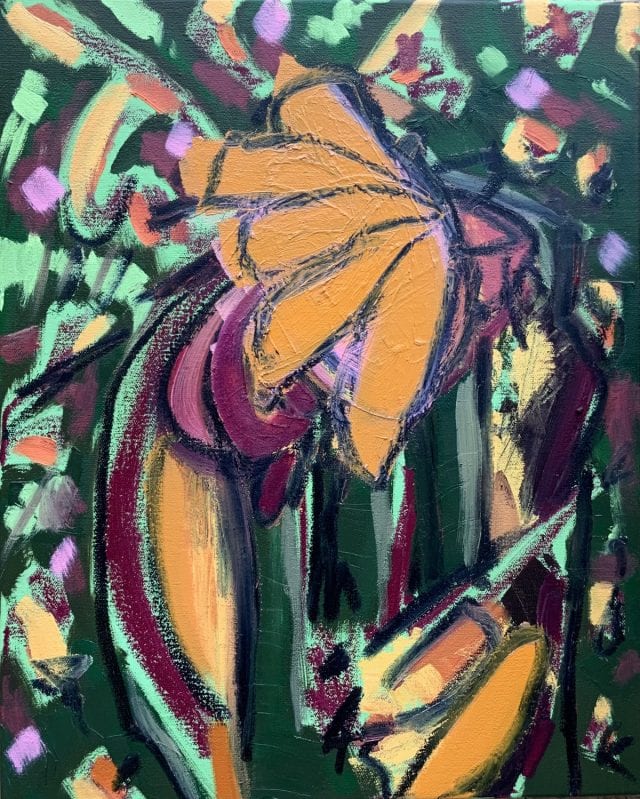Immersive Art: The Experience Within
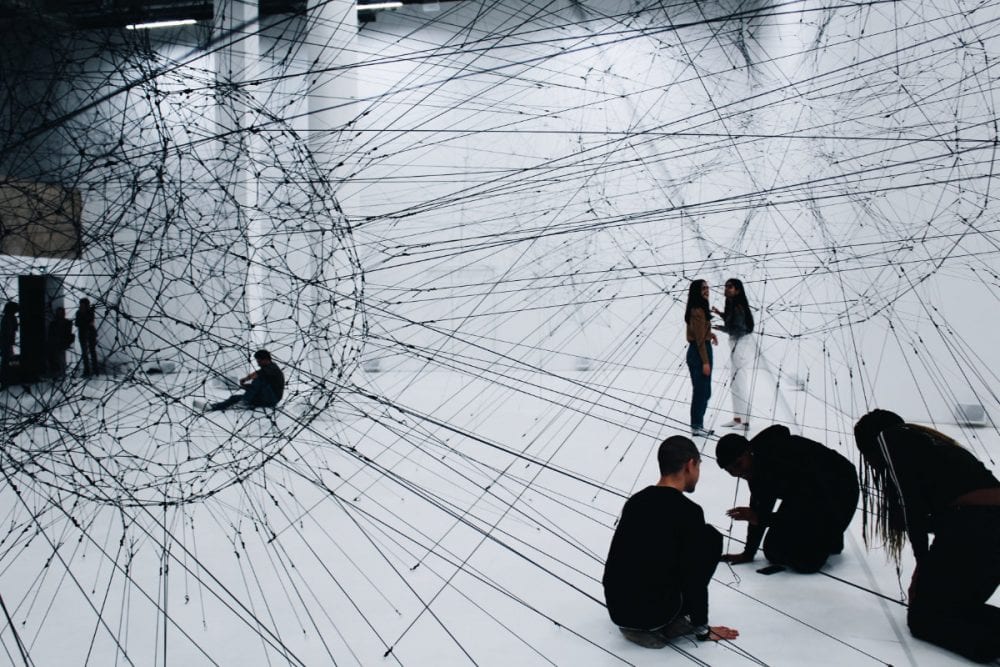
A once-passive medium, art has evolved. Over the course of history, artists have challenged status quo, penetrated the barriers of societal and cultural norms, and evoked provocation through creative expression.
Art has the capacity to subvert expectation; it provokes the imagination and can disrupt the boundaries of human reality. It’s a form of hedonistic escapism.
The world of reality has its limits; the world of imagination is boundless.
Jean-Jacques Rousseau
This sentiment has been taken to new levels in recent years. Where artists had the power to engage a once passive audience, the medium has evolved into an artistic total-body immersion.
While the days of wandering around a sparse, brightly lit and minimalist gallery may not be over, the doors to experiential art have certainly opened – and as anyone that has walked through those doors can attest, it’s an immersive experience like no other.
There’s no hiding the fact that technology has enabled a degree of social connectivity previously unattainable. Technology has embraced the concept of ‘inclusivity’ and is continuing to enhance human reality on multiple different levels. Artists, forever pushing boundaries, have leveraged this in a unique and compelling way.
The outcome of this is the creation of not just singular artwork, but complex and interactive installations which engage both the body and the mind simultaneously.
Burning Man
Burning Man is probably one of the largest immersive art experiences in the world. Every year, over 80,000 people gather in the Nevada Desert to be a part of a nine-day festival which celebrates huge art installations and structures, creating a metropolis of participation called Black Rock City. In 2019, the “vibrant participatory metropolis generated by its citizens” displayed a total of 415 art installations on the open playa in Black Rock city.
One of the most widely celebrated cultural events in the world, Burning Man epitomises immersive art and the concept of wild self-expression, with artists and participants bound only by the limits of their imagination. Installations range from luminous figurative pieces to gritty, menacing steampunk-inspired designs. The so-called Burning Man sculptures are created at a scale of 10:1 human body size, and are sometimes interactive or kinetic and can be activated by the group effort of participants – aka the burners – who co-create the installations against the blank canvas backdrop of the desert. The participation element gives a rawer sense to true immersion in art.
Every year artists submit designs for what is known as The Temple; larger-scale Burning Man art installations that can require hundreds of volunteers to complete. On the final day of the event, The Temple is burned in a quiet and sombre ritual to mark the end of the festival.
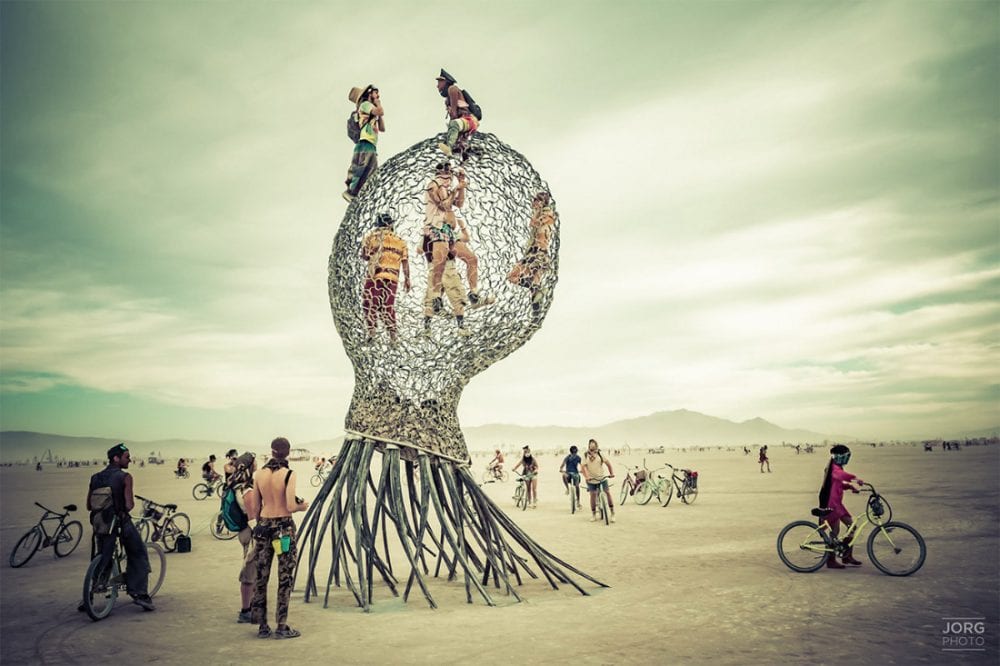
Michael Christian, Kevin Byall, Marc Bloaquiere, and Rigo Dillon.
Source: Michael Christian © Jorg Photo
The rooms of Yayoi Kusama
Early pioneers of immersive art installations such as Japanese artist Yayoi Kusama, who, since 1963, worked to develop the concept of infinity mirror rooms with limited use of technology. These installations commonly featured rooms filled with mirrored glass and neon-coloured balls, lights and even music for a full artistic immersion. The result is an endless infinite space where the self and everything in the room is obliterated.
Starting her career as an artist from childhood, Kusama claimed to experience hallucinations that often involved fields of dots. Those hallucinations and the theme of dots would continue to inform her art throughout her career, and the use of mirrors throughout her renowned installations are representations of the concept of infinity. Her works explore the physical and psychological boundaries of painting, with the seemingly endless repetition creating an almost hypnotic sensation of immersion for both the viewer and the artist.
This year, London’s Tate Modern presents a rare chance to experience two of Yayoi Kusama’s Infinity Mirror Rooms. The exhibition is set to start on 29 March 2021, lasting until 27 March 2022. These immersive installations promise to transport you into Kusama’s unique world of endless reflections.
Kusama’s work has spanned more than half a century, and the two installations will be exhibited alongside “photos and footage of early performance works and studio happenings”. One of the installations, Infinity Mirrored Room – Filled with the Brilliance of Life, is one of the artist’s most celebrated and vast installations, created for her retrospective at the Tate Modern in 2012. The second installation, Chandelier of Grief, is said to “create the illusion of a boundless universe of rotating crystal chandeliers”.
My art originates from hallucinations only I can see. I translate the hallucinations and obsessional images that plague me into sculptures and paintings.
Yayoi Kusama
© Dunedin Public Art Gallery
In Orbit Installation in K21
In the Kunstsammlung Nordrhein-Westfalen visitors can explore the gigantic installation at a height of more than 25 meters by climbing. The installation created by the Argentinian contemporary artist Tomás Saraceno is a surreal landscape, and is “reminiscent of a sea of clouds or floating planetary bodies”.
In each discipline, I see another universe—and I keep getting lost every time I try to dive into a new one … struggling with how many I can’t even see or read, invisible to my eyes and so relevant to yours, I need more senses to perceive this, that, and your reality[…] For the project at K21 … we could not find a computer program, or institution with the necessary knowledge to help predict the exact behavior of the net, or whether the force applied to the net could damage the existing building. The conclusion we arrived at with the engineers was that a 1:1 real model presents the most cost-effective means to test these real forces.
Tomás Saraceno

© Studio Tomás Saraceno 2013
Source: Kunstsammlung Nordrhein-Westfalen
teamLabs in Tokyo
As technology progressed, so has the trend. Immersive art is now seen in entire purpose-built galleries such as teamLabs in Tokyo – a digital installation where visitors walk from room to room experiencing the effects of a symbiotic combination of sensors, screens, LED lights, sound, computer-generated imagery, and even water.
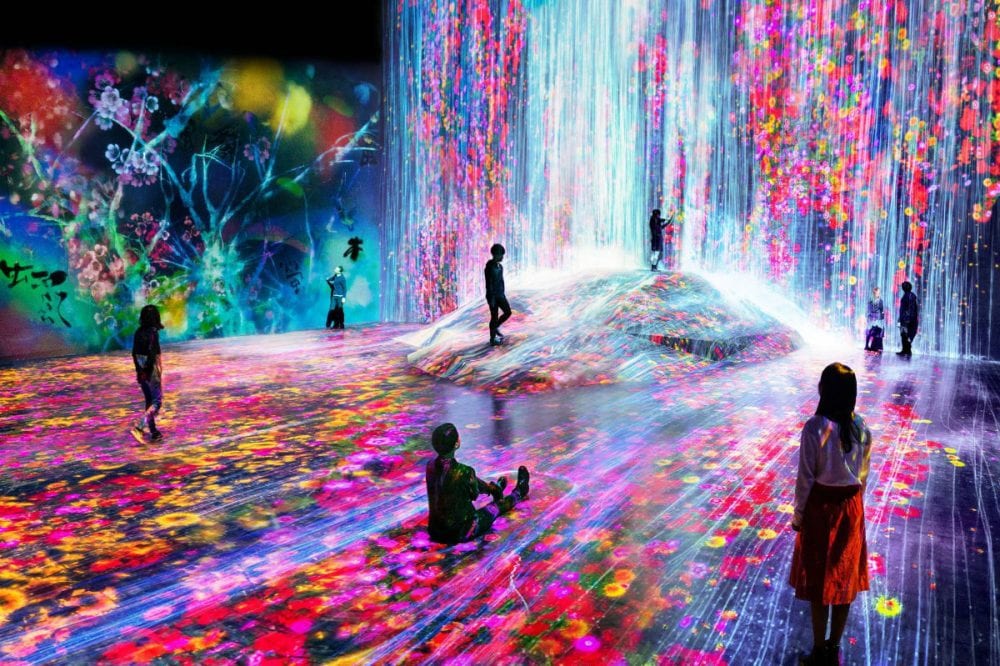
© teamLab Borderless
Digital technology releases expression from physical material, like canvas and paint, and creates an existence with the possibility for transformation.
Takashi Kudo, Communications Director of teamLab
Rain Room
The famous Rain Room, the brainchild of Random International, a London-based collective founded by Hannes Koch, Florian Ortkrass, and Stuart Woodof which debuted in 2012, is said to be a physical representation of the merging yet simultaneous distinction between the convergence of media technologies and environmental systems, emerging as tropes of planetary connectivity.
Visitors walk through a room that ‘rained’ but never actually get wet – a creation that involved a water-management system, injection-moulded tiles, solenoid valves, pressure regulators, custom software and 3-D tracking cameras to execute.
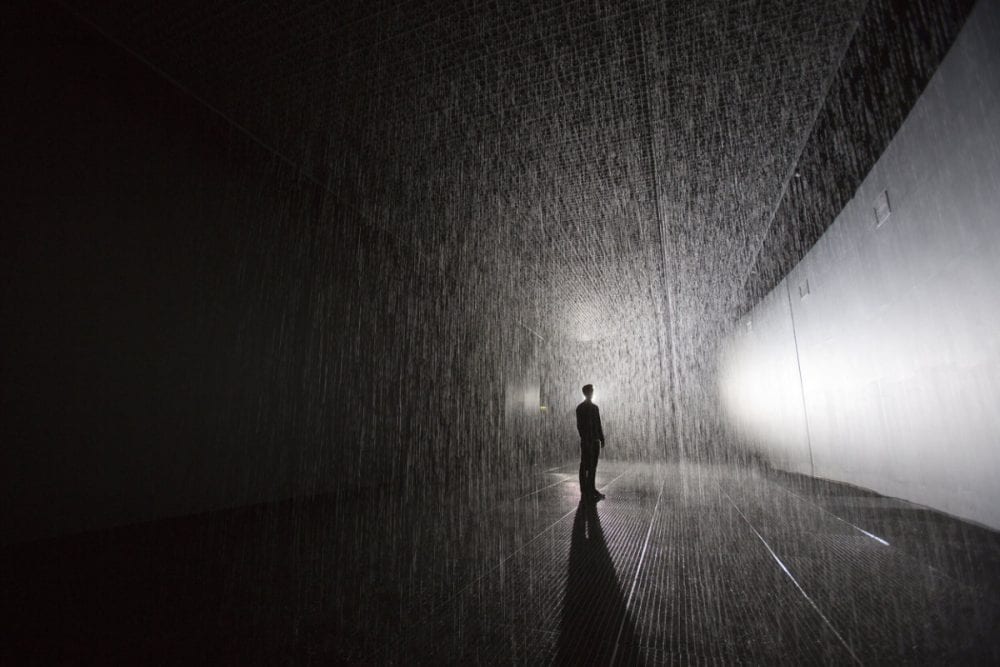
© Random International
Immersive artists have become more experimental and intrepid as they explore the limitations of a full-body artistic experience. Sensors, 3D scans, temperature detectors, and virtual and augmented reality are all elements that can allow humans to explore the ultimate blended experience of an alternate reality through the medium of art.
With the continued advancement in technology, we could only just be scratching the surface of immersive art, and in all likelihood, futuristic experiential art is a medium which will continue to subvert the human experience of perceived reality.
Instagram Tip: To view various immersive art installation across the world, take a look at the Instagram account of The Immersive Art Gallery.



